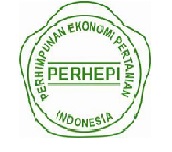Pengendalian Hama Terpadu pada Pertanaman Cabai dengan Fokus Aplikasi Bioinsektisida Berbahan Aktif Bacillus thuringiensis
Abstract
Integrated Pest Control in Chili Plantations with a Focus on Bioinsecticide Applications with Active Ingredients Bacillus thuringiensis. Bacillus thuringiensis is an entomopathogenic bacterium that plays important role in controlling plant pests. These bacteria can be propagated with agricultural waste media producing bioinsecticides. The use of bioinsecticides for controlling insect pests on chili plants was done through community service activities. The activity was carried out in Tanjung Baru Village, North Inderalaya Sub-district, Ogan Ilir Regency, South Sumatra, from August to October 2021. As one of the chili producing centers, farmers in Tanjung Baru Village grew chili almost all year round. Insects pests attacing chili plants were aphids, thrips, armyworms and fruit flies. Control is mostly done with synthetic insecticides, which are often mixed. Control activities focusing on the use of bioinsecticides with B. thuringiensis-based were carried out to overcome this problem. An initial demonstration plot was made for farmers to see the results of the experiment. The next stage farmers were given skills to make these bioinsecticides. To measure the success of the activity, a feedback survey was conducted amongfarmers. The survey results showed 80% of farmers were interested in using B. thuringiensis-based bioinsecticide and intended to use it. Regarding the skills of making bioinsecticides, more than 90% were interested in making their own, because waste materials as a medium for propagation were available in abundance. Chili farmers in Tanjung Baru Village can receive information from outsiders and showed a desire to change their old habit (use of chemical insecticides) to switch to biological control.
Keywords
Full Text:
PDF (Bahasa Indonesia)References
Dara, S. K. (2019). The new integrated pest management paradigm for the modern age. Journal of Integrated Pest Management, 10(1), 12. https://doi.org/10.1093/jipm/pmz010
Fernandez, JAH. (2016). Bacillus Thuringiensis: A Natural Tool In Insect Pest Control. CAB International 2016. The Handbook of Microbial Bioresourses (Eds V.K Gupta et al.) https://doi.org/10.1079/9781780645216.0121
Land, M., & Miljand, M. (2014). Biological control of mosquitoes using Bacillus thuringiensis israelensis: a pilot study of effects on target organisms, non-target organisms and humans. Mistra EviEM, Stockholm, Sweden.
Legwaila, M. M., Munthali, D. C., Kwerepe, B. C., & Obopile, M. (2015). Efficacy of Bacillus thuringiensis (var. kurstaki) against diamondback moth (Plutella xylostella L.) eggs and larvae on cabbage under semi-controlled greenhouse conditions. International Journal of Insect Science, 7, IJIS-S23637. https://doi.org/10.4137/IJIS.S23637
Poopathi, S., Mani, C., & Rajeswari, G. (2013). Potential of sugarcane bagasse (agro-industrial waste) for the production of Bacillus thuringiensis israelensis. Pujiastuti, Y. (2018a). Toxicity of Bacillus thuringiensis-based Bio-insecticide on Coptotermes curvinagthus (Isoptera: Rhinotermidae) in Laboratory. Journal of Advanced Agricultural Technologies Vol, 5(1).
Pujiastuti, Y. (2018b). Toxicity Bacillus thuringiensis-based bio insecticide enriched with golden snail meat flour against worker and soldier castes of Coptotermes curvignathus (Isoptera: Termitidae). In E3S web of conferences (Vol. 68, p. 01029). EDP Sciences. https://www.e3sconferences.org/articles/e3sconf/abs/2018/43/e3sconf_sricoenv2018_01029/e3sconf_sricoenv2018_01029.html
Pujiastuti, Y., Arsi, A., & Sandi, S. (2020a). Characteristics of Bacillus thuringiensis isolates indigenous soil of South Sumatra (Indonesia) and their pathogenicity against oil palm pests Oryctes rhinoceros (Coleoptera: Scarabaeidae). Biodiversitas Journal of Biological Diversity, 21(4). https://doi.org/10.13057/biodiv/d210403
Pujiastuti, Y., Gunawan, B., & Sulistyani, D. P. (2020b, March). Bacillus thuringiensis propagated in bio-urine media as a biological control of termite Coptotermes curvignathus and armyworm Spodoptera litura. In IOP Conference Series: Earth and Environmental Science (Vol. 468, No. 1, p. 012009). IOP Publishing. https://iopscience.iop.org/article/10.1088/1755-1315/468/1/012009
Salazar-Magallon, J. A., Hernandez-Velazquez, V. M., Alvear-Garcia, A., Arenas-Sosa, I., & Peña-Chora, G. (2015). Evaluation of industrial by-products for the production of Bacillus thuringiensis strain GP139 and the pathogenicity when applied to Bemisia tabaci nymphs.
VALICENTE, F. H., TUELHER, E. D. S., Leite, M. I. S. L., FREIRE, F. L., & VIEIRA, C. M. (2010). Production of Bacillus thuringiensis biopesticide using commercial lab medium and agricultural by-products as nutrient sources. Revista Brasileira de Milho e Sorgo, 9(01), 1-11. https://doi.org/10.18512/1980-6477/rbms.v9n01p1-11
Zou, H., Ding, S., Zhang, W., Yao, J., Jiang, L., & Liang, J. (2016). Study on influence factors in Bacillus thuringiensis production by semi-solid state fermentation using food waste. Procedia Environmental Sciences, 31, 127-135. https://doi.org/10.1016/j.proenv.2016.02.018
DOI: https://doi.org/10.20961/prima.v8i1.60643
Refbacks
- There are currently no refbacks.
View My Stats

This work is licensed under a Creative Commons Attribution-ShareAlike 4.0 International License.


.jpg)



1.jpg)











